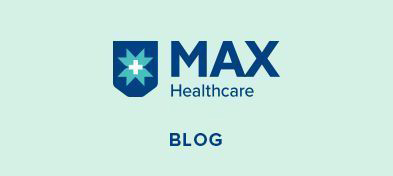To Book an Appointment
Call Us+91 92688 80303Diabetes Day Column
By Dr. Ambrish Mithal in Endocrinology & Diabetes
Nov 15 , 2021 | 1 min read
Your Clap has been added.
Thanks for your consideration
Share
Share Link has been copied to the clipboard.
Here is the link https://www.maxhealthcare.in/blogs/diabetes-day-column
Changing Paradigm In Delivery Of Diabetes Care:
Diabetes is a chronic, often life long, condition, which requires regular testing and visits to the doctor. India has close to 80 million people with diabetes. Providing access to care for such large numbers is a major challenge.
Among the learnings from the Covid19 pandemic is the enhanced ability to use telemedicine technology to provide care to people with diabetes. “Telemedicine” means “healing at a distance”. There are 2 broad categories of telemedicine consultations- real time, which could be video, audio or text, or asynchronous like emails.
In diabetes, a routine visit to the doctor often involves sharing numbers and data (blood glucose values and laboratory tests) sometimes without a detailed physical examination. This can easily be done without having to make the trek to the doctor’s office which is often hundreds of miles away, saving on both expenses and time. With the major disruptions to healthcare in pandemic times, telemedicine is a boon as it also saves one from exposure to the virus. Our own study during the pandemic showed superior efficacy of teleconsultations in controlling blood glucose as compared to physical visits!
Who is an ideal patient for teleconsultation?
- A follow up patient, who has already been examined by the doctor in his clinic.
- Typically has no acute symptoms or problem- in such cases visiting the nearest facility is advisable
- Ideally only those who are either because of age, sickness or distance unable to reach the hospital should avail this facility- else it will eat into the time for physical consultations of sicker patients in the hospital.
Challenges faced in telemedicine
- Absence of physical examination – the eyes and feet being examples specific to diabetes
- Patients who are not friendly with technology or the elderly with cognitive impairment are unable to use telemedicine. In such cases we often have a relative or friend to assist them.
- Poor connectivity continues to be a challenge in many parts.
- Complex therapies especially educating about diet, insulin and low blood sugar can be difficult.
- Any condition which requires major changes in therapy should be dealt with in face to face consults. Type 1 diabetes, gestational diabetes, foot infections or any emergency situation should not be dealt without examining the patient.

Written and Verified by:
Related Blogs

Dr. Vaishakhi Rustagi In Endocrinology & Diabetes , Paediatric (Ped) Endocrinology , Nutrition And Dietetics
Nov 08 , 2020 | 1 min read

Dr. Vaishakhi Rustagi In Paediatric (Ped) Endocrinology , Endocrinology & Diabetes
Nov 08 , 2020 | 2 min read
Blogs by Doctor
Most read Blogs
Get a Call Back
Related Blogs

Dr. Vaishakhi Rustagi In Endocrinology & Diabetes , Paediatric (Ped) Endocrinology , Nutrition And Dietetics
Nov 08 , 2020 | 1 min read

Dr. Vaishakhi Rustagi In Paediatric (Ped) Endocrinology , Endocrinology & Diabetes
Nov 08 , 2020 | 2 min read
Blogs by Doctor
Most read Blogs
Specialist in Location
- Best Endocrinologists in Delhi
- Best Endocrinologists in Ghaziabad
- Best Endocrinologists in Patparganj
- Best Endocrinologists in Bathinda
- Best Endocrinologists in Panchsheel Park
- Best Endocrinologists in Dehradun
- Best Endocrinologists in Noida
- Best Endocrinologists in Lajpat Nagar
- Best Endocrinologists in Shalimar Bagh
- Best Endocrinologists in Gurgaon
- Best Endocrinologists in Mohali
- Best Endocrinologists in Saket
- Best Endocrinologists in India
- Best Endocrinologist in Nagpur
- Best Endocrinologist in Lucknow
- Best Endocrinologists in Dwarka
- Best Endocrinologist in Pusa Road
- Best Endocrinologist in Vile Parle, Mumbai
- Best Endocrinologists in Sector 128, Noida
- CAR T-Cell Therapy
- Chemotherapy
- LVAD
- Robotic Heart Surgery
- Kidney Transplant
- The Da Vinci Xi Robotic System
- Lung Transplant
- Bone Marrow Transplant (BMT)
- HIPEC
- Valvular Heart Surgery
- Coronary Artery Bypass Grafting (CABG)
- Knee Replacement Surgery
- ECMO
- Bariatric Surgery
- Biopsies / FNAC And Catheter Drainages
- Cochlear Implant
- More...








